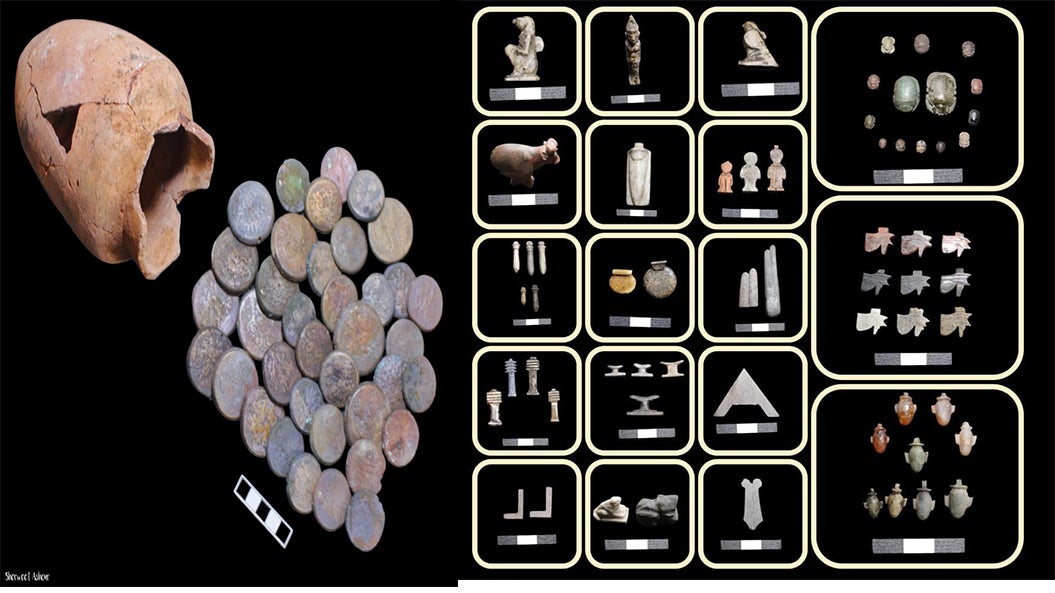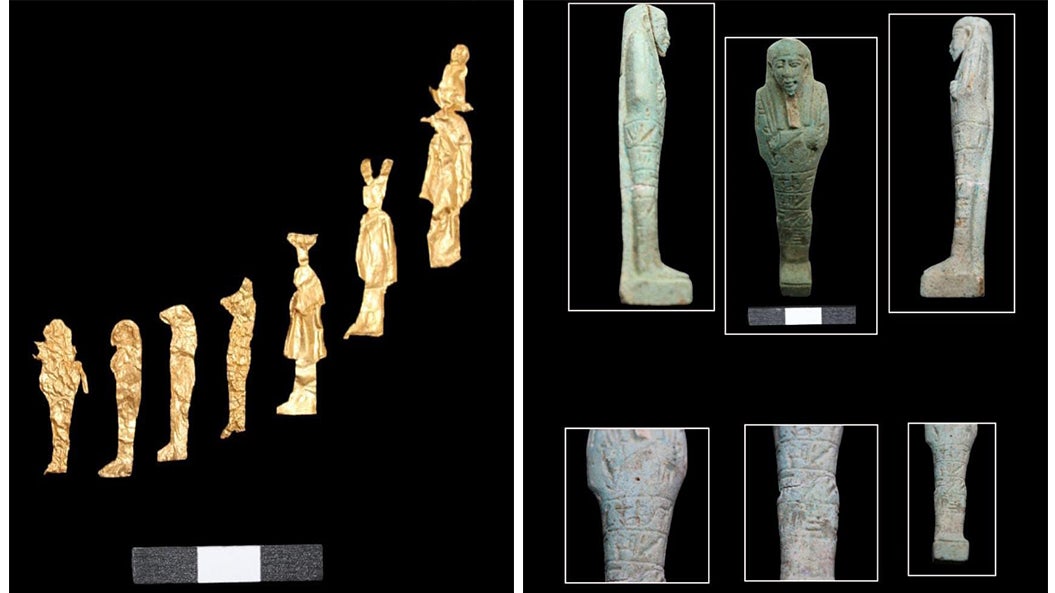Egyptian archaeologists uncover dozens of rare untouched burials with 2,500-year-old gold treasures
Researchers found gold foil and figurines representing ancient Egyptian deities Isis, Bastet, and Horus
Your support helps us to tell the story
From reproductive rights to climate change to Big Tech, The Independent is on the ground when the story is developing. Whether it's investigating the financials of Elon Musk's pro-Trump PAC or producing our latest documentary, 'The A Word', which shines a light on the American women fighting for reproductive rights, we know how important it is to parse out the facts from the messaging.
At such a critical moment in US history, we need reporters on the ground. Your donation allows us to keep sending journalists to speak to both sides of the story.
The Independent is trusted by Americans across the entire political spectrum. And unlike many other quality news outlets, we choose not to lock Americans out of our reporting and analysis with paywalls. We believe quality journalism should be available to everyone, paid for by those who can afford it.
Your support makes all the difference.Archaeologists have uncovered dozens of tombs in an ancient Egyptian necropolis containing burials at least 2,500 years old, along with rare untouched gold treasures.
Unlike most ancient Egyptian treasures from millennia ago that have been looted by grave robbers, the latest site was found to contain a hoard of untouched bronze coins, gold foil and ancient figurines representing deities such as Isis, Bastet, and Horus.
Undamaged artefacts like pottery vessels, funerary amulets, and scarabs found along with the treasures throw fresh light on the customs and rituals followed by ancient Egyptians of this era, says Mohamed Ismail Khaled, secretary general of the Egyptian Supreme Council of Antiquities.
For decades, researchers have been carrying out excavation projects at a site in Tel el-Deir near Lebanon, found to be an ancient cemetery, or necropolis.
In 2019, archaeologists found seven gold coins dating to the Byzantine period between 284 to 641 AD, and statues engraved with the name of King Psamtik II of the 26th Dynasty.

Excavations over the years culminated in the discovery of a vast burial complex in 2022, dating to between 644 and 525 BCE.
This necropolis dated to the Late Period of ancient Egypt hosts several kinds of burials, being the final resting place of the bodies of humbler common citizens as well as those of the rich.
At the site, researchers previously uncovered miniature canopic jars, vessels into which a dead person’s organs were placed during mummification.
Tombs here were made of mud brick in the case of common folk and limestone in the case of wealthier individuals.

Surprisingly, archaeologists also unearthed 38 bronze coins in a ceramic jar at the site dated to the Ptolemaic dynasty, which lasted several hundred years after the complex was built from from 305 to 30 BC.
Along with this finding, an architectural layout of the complex unearthed during the dig may lead to re-dating of an important period for the ancient Egyptian city of Damietta, researchers say.
Overall, the unearthed artefact shed better light on the craftsmanship of the ancient Egyptians as well as their access to materials via trade.
Together, these findings hint that Damietta was an important commercial hub for a significant period in the history of ancient Egypt.

Join our commenting forum
Join thought-provoking conversations, follow other Independent readers and see their replies
Comments